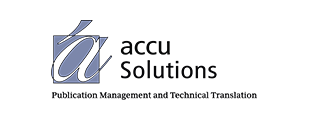Training
Training is an essential aspect of ensuring that personnel have the necessary knowledge and skills to operate and maintain complex systems. In industries such as aerospace and defense, where safety and reliability are paramount, the implementation of a structured training program is critical. The S6000T standard is a widely recognized framework for developing and implementing training programs for complex systems.

Accu’s implementation of training in accordance with S6000T involves the following steps:
1. Determine the training requirements: This step involves identifying the skills and knowledge that personnel require to operate and maintain the system effectively.
2. Develop the training plan: The training plan outlines the training program’s objectives, the learning outcomes, and the training materials and resources required to meet the training objectives.
3. Develop the training materials: The training materials include instructor manuals, student manuals, and multimedia materials such as videos and interactive simulations.
4. Deliver the training: The training is delivered to personnel using a variety of methods, including classroom training, on-the-job training, and computer-based training.
5. Evaluate the effectiveness of the training: The effectiveness of the training is evaluated using metrics such as knowledge tests and performance assessments.
Accu’s implementation of training in accordance with S6000T provides several benefits, including:
1. Improved personnel competency: The structured approach of S6000T ensures that personnel have the necessary knowledge and skills to operate and maintain the system effectively, improving personnel competency.
2. Increased system reliability: By ensuring that personnel have the necessary knowledge and skills to operate and maintain the system effectively, training can improve system reliability.
3. Increased safety: By ensuring that personnel have the necessary knowledge and skills to operate and maintain the system safely, training can improve safety for equipment operators and maintenance personnel.
4. Improved system performance: By ensuring that personnel have the necessary knowledge and skills to operate and maintain the system effectively, training can improve system performance.
2. Develop the training plan: The training plan outlines the training program’s objectives, the learning outcomes, and the training materials and resources required to meet the training objectives.
3. Develop the training materials: The training materials include instructor manuals, student manuals, and multimedia materials such as videos and interactive simulations.
4. Deliver the training: The training is delivered to personnel using a variety of methods, including classroom training, on-the-job training, and computer-based training.
5. Evaluate the effectiveness of the training: The effectiveness of the training is evaluated using metrics such as knowledge tests and performance assessments.
2. Increased system reliability: By ensuring that personnel have the necessary knowledge and skills to operate and maintain the system effectively, training can improve system reliability.
3. Increased safety: By ensuring that personnel have the necessary knowledge and skills to operate and maintain the system safely, training can improve safety for equipment operators and maintenance personnel.
4. Improved system performance: By ensuring that personnel have the necessary knowledge and skills to operate and maintain the system effectively, training can improve system performance.

